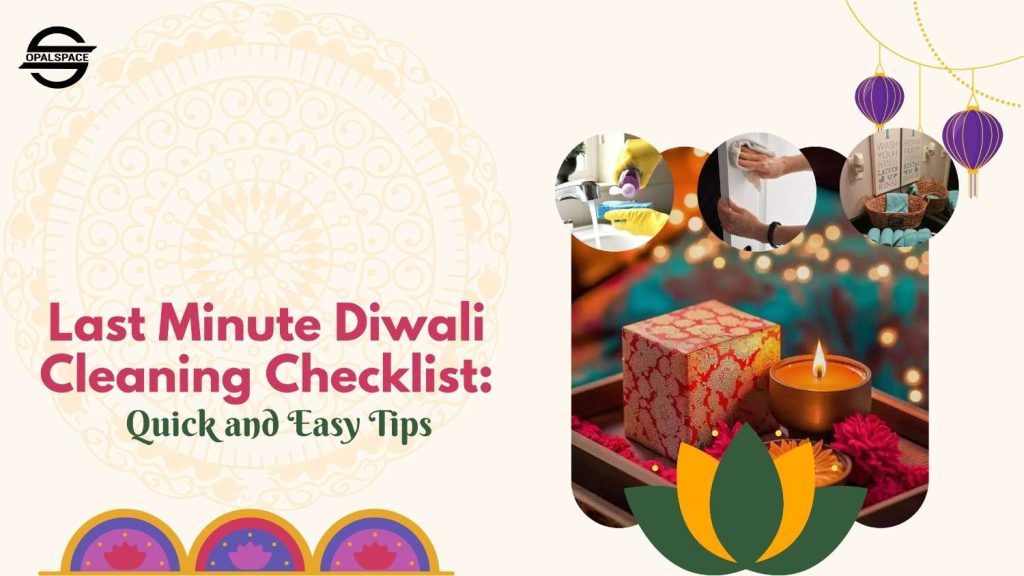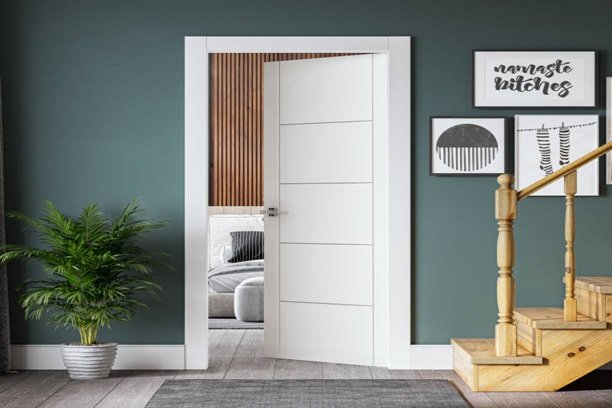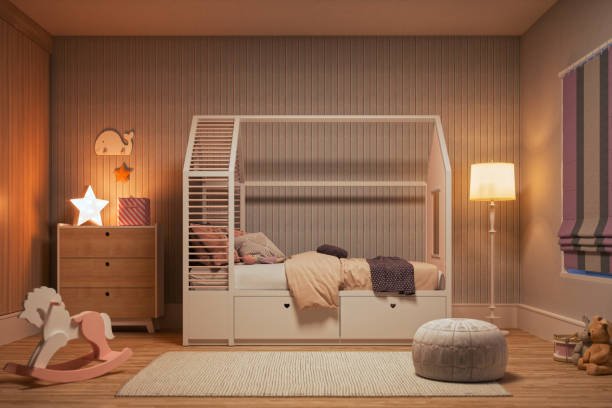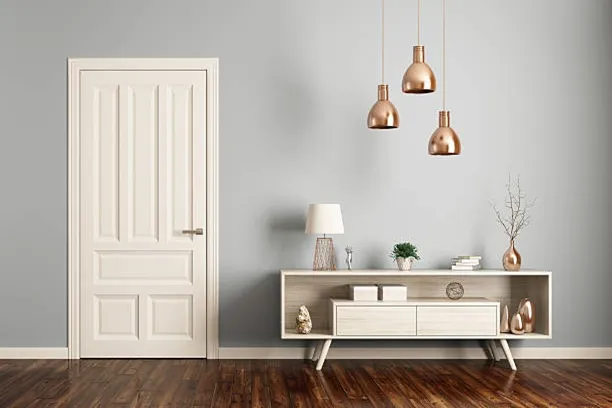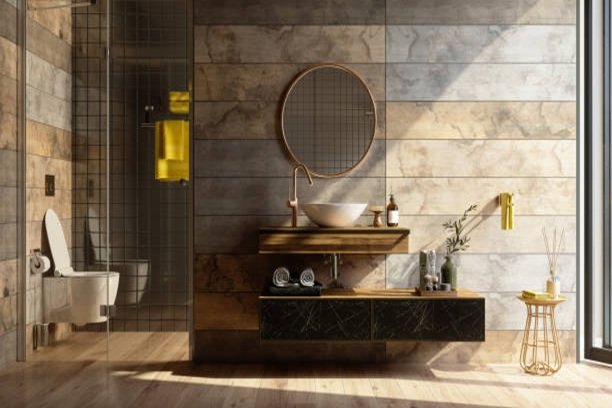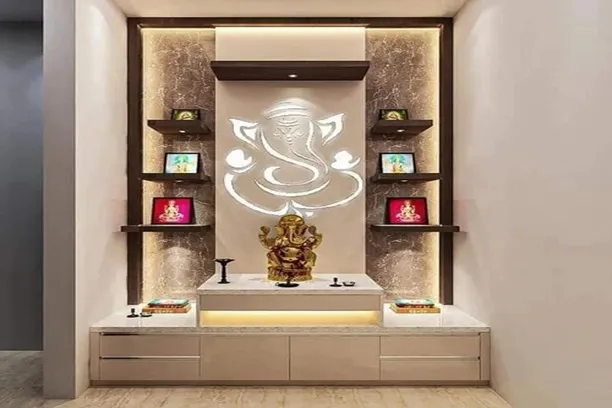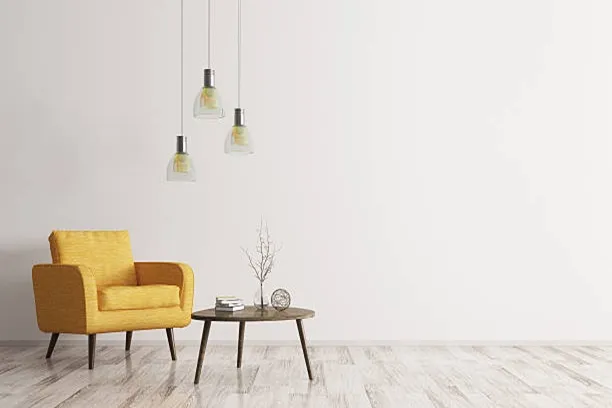Table of Contents
With Diwali signifying the victory of light over darkness and order over disorder, the ritual of Diwali cleaning is rooted in the cultural fabric of Indian homes. It holds deeper significance than simply serving a practical purpose. It is seen as a way to clear out negativity and welcome prosperity, positive energy, and the blessings of Goddess Lakshmi into one’s space. In many Indian households, this annual act of decluttering and deep cleaning is treated with the same reverence as the rituals of the festival itself. It’s a conscious effort to renew the physical surroundings, and eventually the atmosphere of the home.
This guide is designed for those navigating the final stretch before Diwali with limited time and energy. It breaks down essential cleaning tasks by material, space, and function, helping you tidy up quickly and meticulously. It is suggested to encourage each family member to take charge of a space or task they’re most comfortable with, since shared efforts would make the process faster and more enjoyable.
This guide is designed for those navigating the final stretch before Diwali with limited time and energy. It breaks down essential cleaning tasks by material, space, and function, helping you tidy up quickly and meticulously. It is suggested to encourage each family member to take charge of a space or task they’re most comfortable with, since shared efforts would make the process faster and more enjoyable.
Object and Material Based Diwali Cleaning
1. Furniture and Upholstery
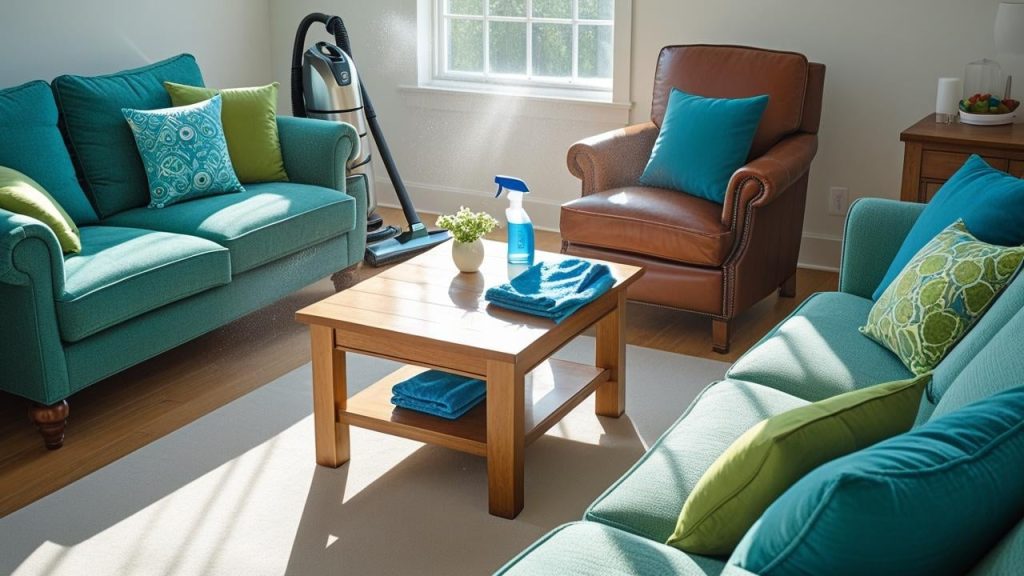
- Before you clean any furniture or upholstery, identify what it’s made of. Because each material needs different kind of cleaning and care.
- For upholstered furniture, check for a manufacturer’s tag. You might find codes like.
S – Solvent-based cleaner only
WS – Either water- or solvent-based is fine
X – Vacuum only, no liquid
- Dust, crumbs, and dirt settle deep into cushions and corners. Take help of a vacuum cleaner for fast cleaning.
- It has a soft brush attachment for sofas, chairs, and even wooden furniture.
- In case of small spill stains, blot with a clean cloth. Use a mild soap solution (like a few drops of dishwashing liquid in warm water). Before that, test it on any hidden area to make sure it doesn’t cause discoloration.
- For wooden furniture, you can use slightly damp microfiber cloth and wipe with it.
- There’s a quick hack for sticky spots, use a diluted solution of white vinegar and water (equal parts).
- It is smart if you don’t forget to use a furniture-safe wood polish to maintain shine.
- For deep cleaning leather upholstery, take a few drops of mild soap, or maybe baby shampoo, in warm water. And use a soft cloth to gently clean, then dry it with another clean cloth.
- Do not forget to apply leather conditioner so you can keep it from drying or cracking.
- To get rid of smells and odours, you can sprinkle baking soda on fabric upholstery and leave it for 20-30 minutes before vacuuming. It helps absorb odours.
- However, you cannot use it for wood or leather. Just keep the surface clean and well-ventilated.
- For musty smells, use white vinegar and water spray. It should be light mist. But always do a patch test first.
- If you’re thinking of using bleach, strong acids, or ammonia-based products, try and avoid them unless clearly stated as safe. These can damage surfaces, cause colour fading, or affect fabric fibres over time.
- After cleaning, ensure the surface dries completely, especially fabric or leather. Keep windows open or use fans to help speed up drying. Never expose furniture directly to strong sunlight for long hours, it can cause fading or cracking.
2. Surfaces and Fixtures
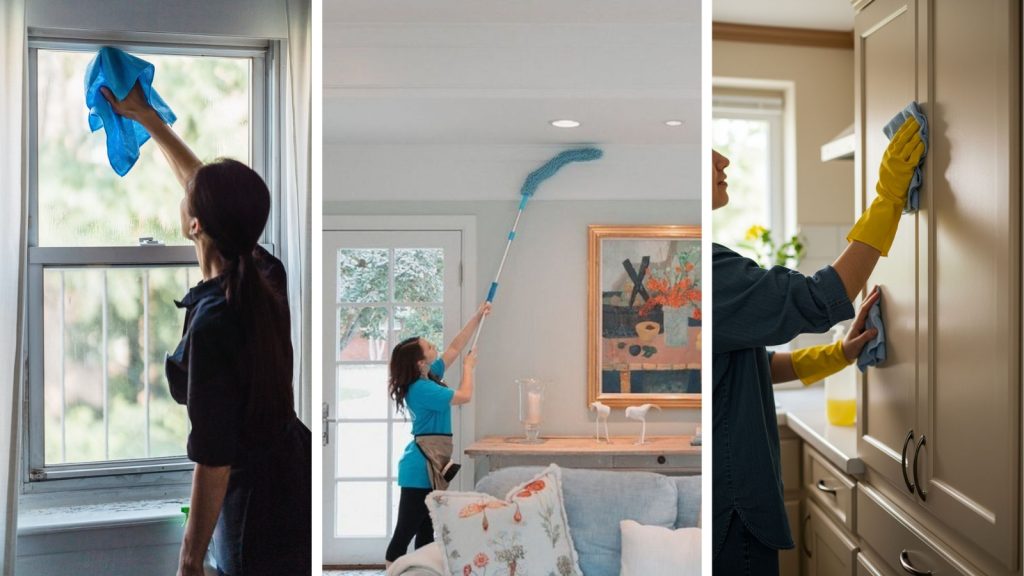
- Start with dry dusting first, be it shelves, countertops, switchboards, or fan blades.
- Beware that glass needs streak-free cleaning, wood doesn’t go well with too much water, marble and granite are acid-sensitive, therefore, avoid vinegar or lemon-based cleaners.
- For tiles and ceramics, they can handle regular water-based cleaners, and metal fixtures need light-handed polishing and anti-rust care.
- Wipe the counters, tables desks with a cloth dipped in a mild soap solution (in warm water). And wipe again with plain water in order to remove soapiness.
- Mirror and glass surfaces, spray white vinegar and water solution again. You may use old newspaper if not microfiber cloth, and clean in circular motion.
- Do not use too much liquid because it can drip into the frame and cause damage over time.
- Bathroom and kitchen fixtures (tap, faucets, showerheads) gather mineral deposits and water stains over time. Taking help of a white vinegar solution, which is to be wrapped around the fixtures for about 15-30 minutes, you can scrub gently with an old toothbrush.
- Finally, rinse them with water. Do not scrub with harsh tools, otherwise it’d leave scratches on the surface.
- It is very natural for grease and soap scum to get build up in kitchen and bathroom areas. And this time, it’s a mixture of baking soda and water. Use it with a sponge, and rinse with water.
- Do not mix products like bleach and vinegar, they can produce toxic fumes. And stick to one cleaner at a time.
3. Metals and Pooja Items
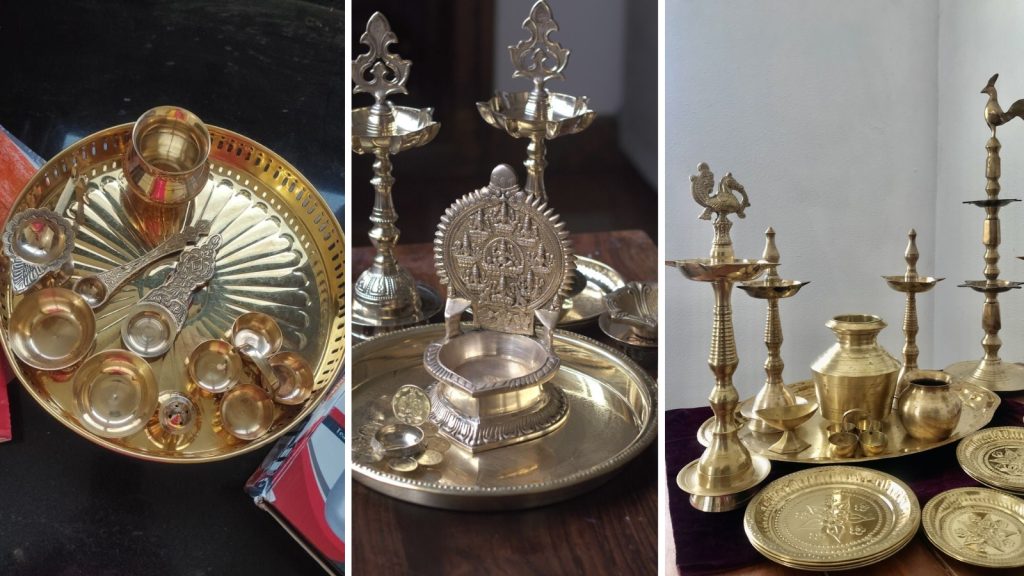
- Gather all the brass lamps, copper lotas, silver thalis, bells, diya stands, and idols into one area. Before that, spread a clean cloth or mat to keep them over it to avoid waster and paste stains on the floor. And anyway, these are all pooja-related.
- Keep separate bowls and cloth ready for different metals.
Silver: Needs a gentler approach
Mixed or unknown metals: Clean mildly to prevent from damaging finishes
- To clean brass and copper vessels, it is advised to use a homemade paste of lemon juice + salt, or tamarind pulp + a bit of baking soda.
- Apply it gently over the surface with a finger or a soft cloth. Let it sit for 3-5 minutes. And then rinse with lukewarm water and pat dry with a soft cotton towel.
- You can scrub lightly with a soft toothbrush to remove heavier black stains. And do not soak these items for long, especially diyas or lamps that may have delicate joints.
- To clean silver items or vessels, toothpaste is very commonly used. Leave it for 2-3 minutes, and rub gently in the end.
- Or, use a mixture of baking soda and water to make a smooth paste.
- Rinse well and then, it is very important to dry immediately to avoid any water marks.
- Do not scrub because you know, silver is a delicate metal and hence, scratches easily.
- In the case of Bronze or Kansa items, you need to make a paste of besan (gram flour) + a pinch of salt + lemon juice, rub lightly and rinse. By any chance, if they still look dull, just clean off the dust and leave them in their natural tone. It’s culturally acceptable and often preferred.
- When it comes to cleaning idols, do the same process as discussed as per respective metal type. It’s just that I use a soft brush or old toothbrush to remove dust from carvings first.
- Since this is a short-term clean-up, you just need to focus on visible areas and items.
Lighting and Electronics
1. Microwave
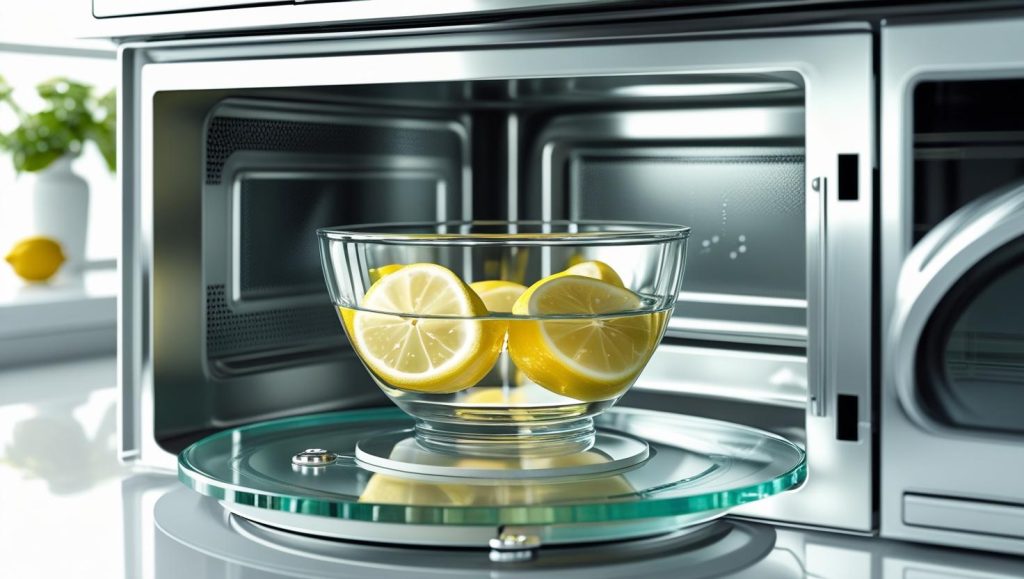
- These are electronic appliances that we are going to talk about, that’s why start with unplugging everything first. This is an inevitable point.
- Place a bowl of water with a few lemon slices inside and heat for 2-3 minutes. Let the steam loosen food stains. Wipe inside with a damp cloth.
2. Mixer/Grinder
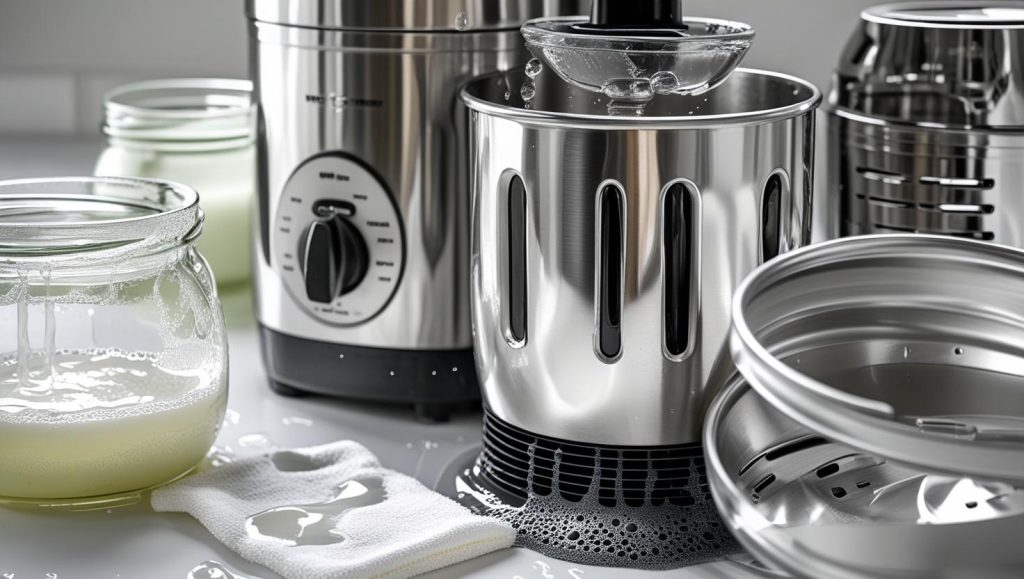
- Detach jars and wash them separately with dish soap. Then wipe the motor base carefully without letting water get into the vents.
3. Refrigerator (Only Exterior)
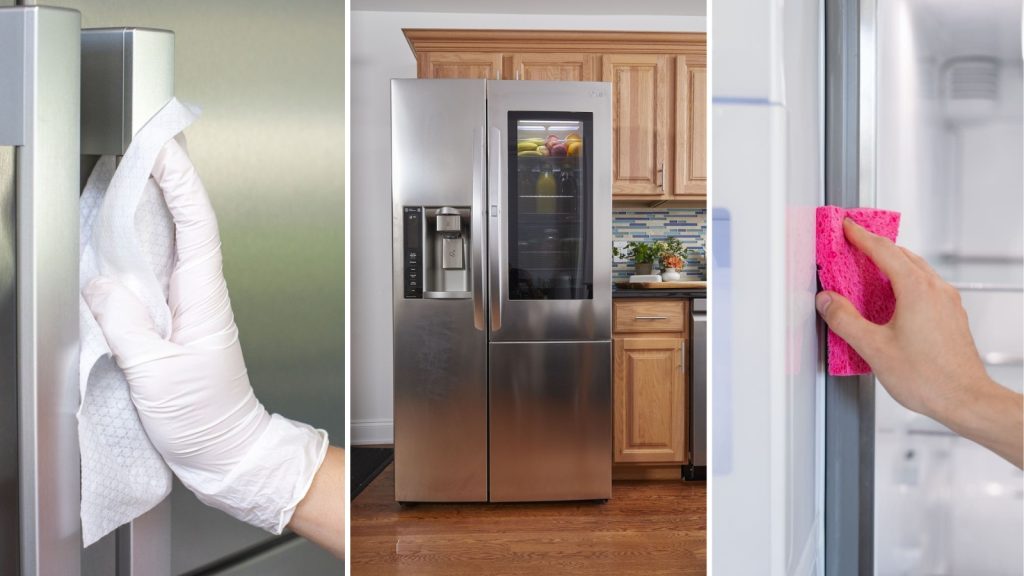
- Wipe handles, doors, and outer surfaces. Save internal deep cleaning for another day unless something urgently needs attention.
4. TVs, Speakers, Monitors, and Remotes
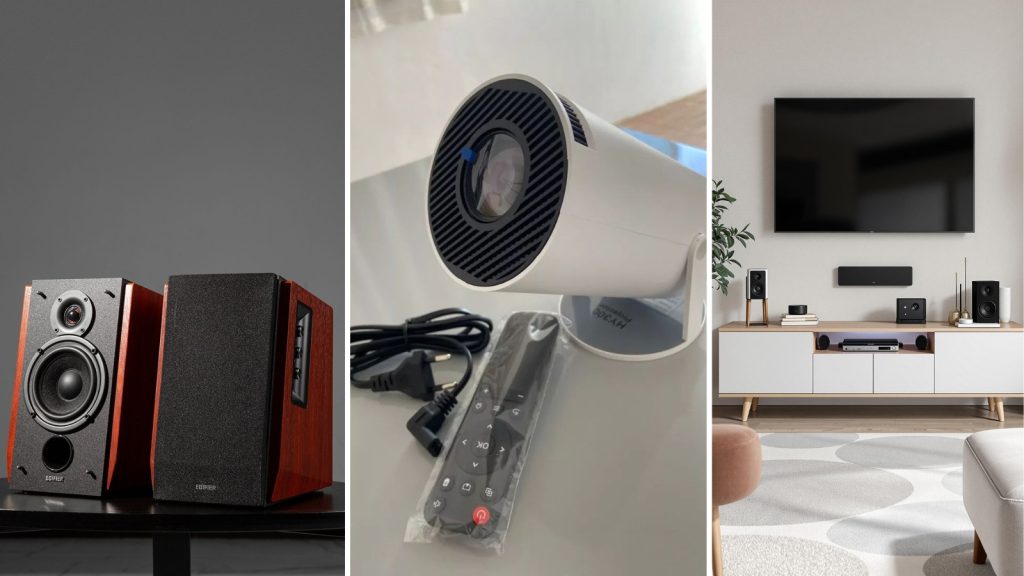
- Take a dry microfiber cloth to wipe screens and bodies.
- Do not ever spray anything directly onto screens. If needed, dampen the cloth slightly and wipe gently.
- Switchboards, handles, and remote controls usually get ignored, but they hold a lot of germs. You can clean them with alcohol-based sanitizer or maybe simply dust them for now.
- For crevices, you should use cotton swabs dipped in a mild cleaner, but never spray directly.
- And as a quick hack and detailed clean at the last minute, use a toothbrush to clean dirt from corners or in between buttons. And remember to wipe with a dry cloth afterward to prevent moisture retention.
5. Laptops and Keyboards
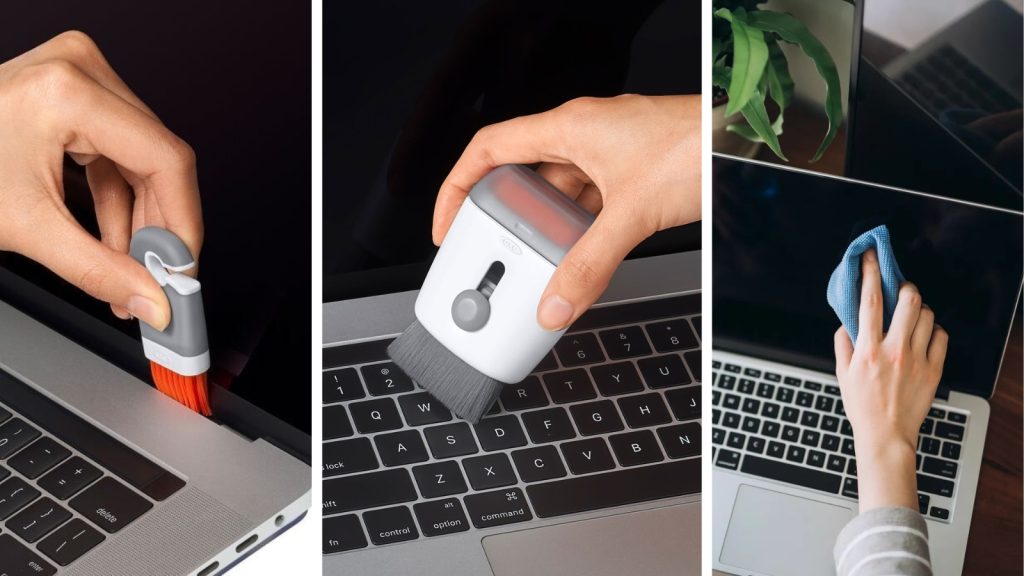
- And for battery-powered items, remove batteries if you’re cleaning inside or near compartments.
- Do normal dusting and remove loose dust from the outer body of all the appliances. For oily and sticky patches like in the kitchen, follow up with a slightly damp cloth.
- And while you’re using wet cloth, be careful and refrain from dripping it on them. Because excess moisture can damage vents, plugs, or control panels.
- You can remove crumbs or dust between keys using a soft brush or air blower. As usual, simply wipe surfaces with a slightly damp microfiber cloth.
6. Fans, Exhausts, and Air Coolers
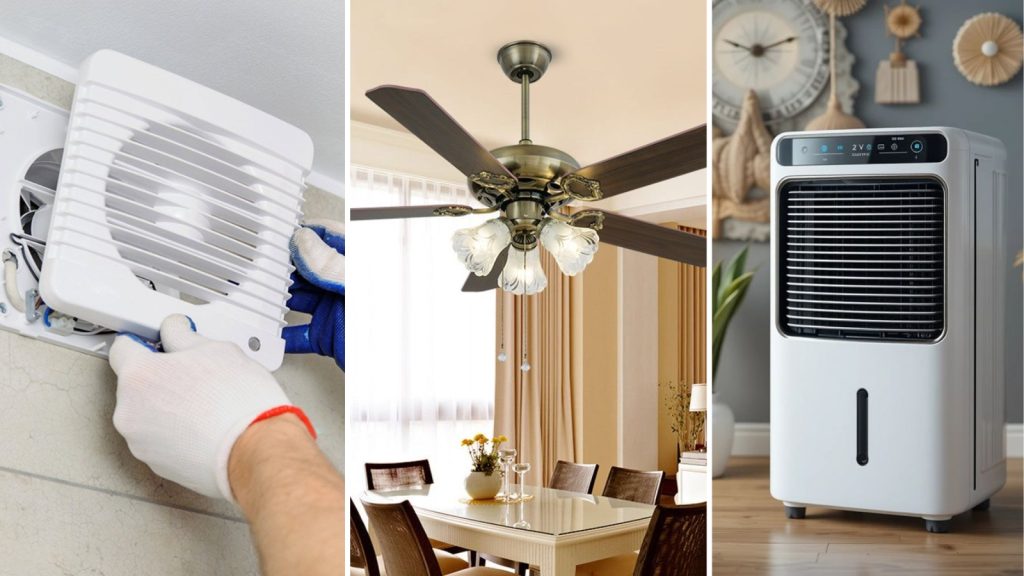
- Wipe the blades and covers of ceiling or table fans with a dry cloth or old pillow cover.
- For exhaust fans and air coolers, clean only the grilles and exterior for now. You can clean filters later.
7. How to Clean Floor Tiles and Walls Quickly?
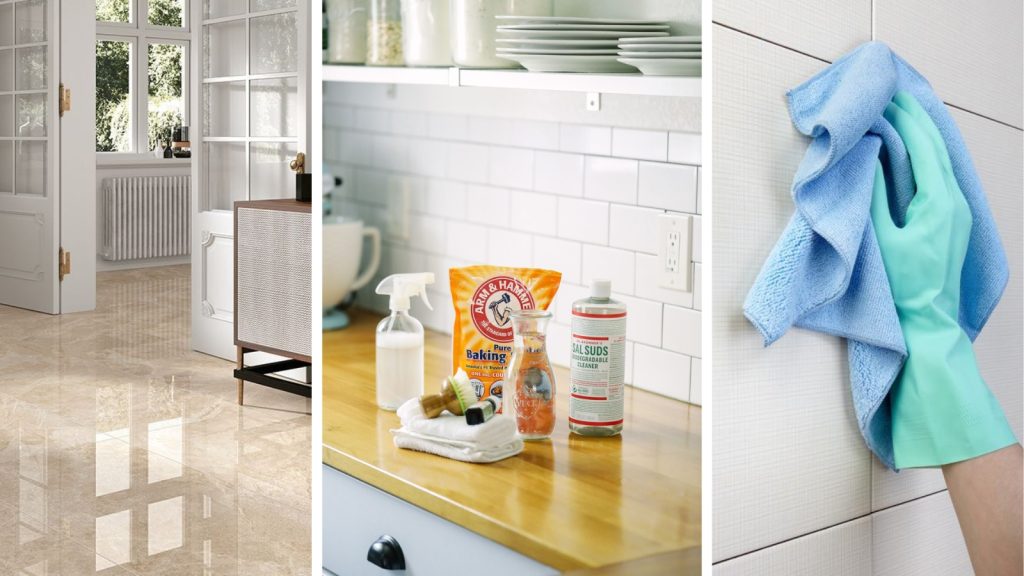
- Sweep or vacuum floors to remove loose dust and debris. And remove cobwebs and dust from walls, especially corners, ceiling edges, and skirting.
- Mix warm water with a few drops of dish soap or floor cleaner, and for greasy kitchen walls, make use of our power solution, which is white vinegar.
- Wring the mop well to prevent soaking the floor, start cleaning from the farthest corner toward the exit, change the water once it turns dirty to avoid spreading grime, and dry the floor with a towel or fan to prevent moisture build-up.
- You only focus on visible or frequently used areas like the kitchen backsplash, bathroom walls, and entrance passages. Wipe them gently with a cloth dipped in a cleaning solution, then rinse with plain water and dry with a clean cloth.
8. How to clean carpet at home & deep clean a mattress?
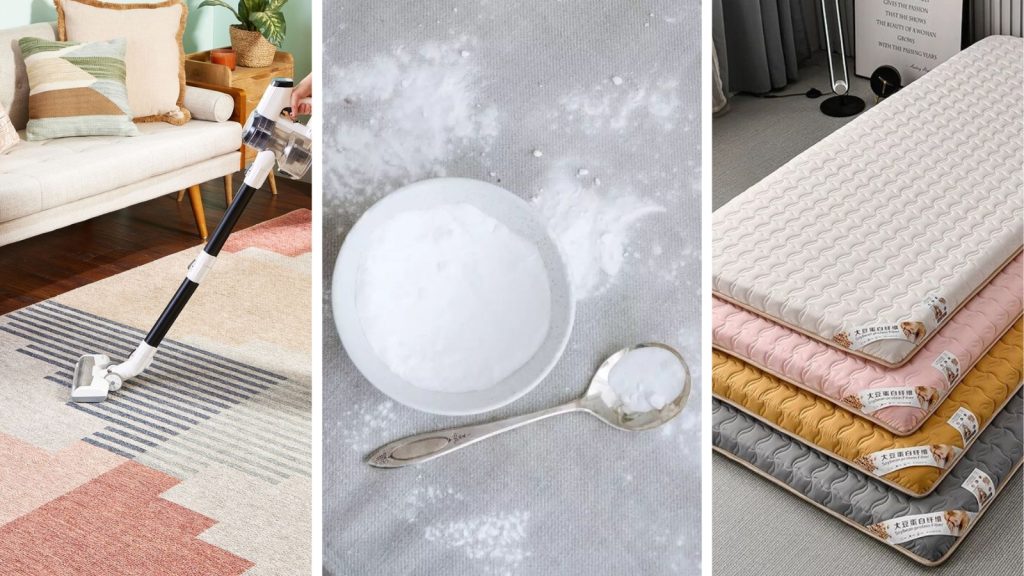
- Vacuum the entire carpet slowly, covering edges, corners, and under furniture. If you don’t have a vacuum cleaner, beat smaller rugs outside to remove trapped dust and hair. Use a brush or broom to loosen dust before vacuuming if the carpet hasn’t been cleaned in a while.
- Sprinkle baking soda generously over the carpet. Let it sit for at least 30–60 minutes (longer if possible). Vacuum it up completely, it helps remove odours and moisture.
- Stick to damp cloth, and do not soak them. Obviously, because wet carpets take time to dry and may develop a musty smell if left damp.
- Remove all bed sheets, covers, and mattress protectors. If weather permits, sun the mattress outdoors for a few hours. This helps kill odour and moisture. If sunning outdoors isn’t possible, place it near a window or under a fan.
- Keep the mattress uncovered and in a well-ventilated room for at least a couple of hours after cleaning. Avoid using it immediately after damp cleaning to prevent mildew or odour.
9. Bathroom Quick Deep Cleaning
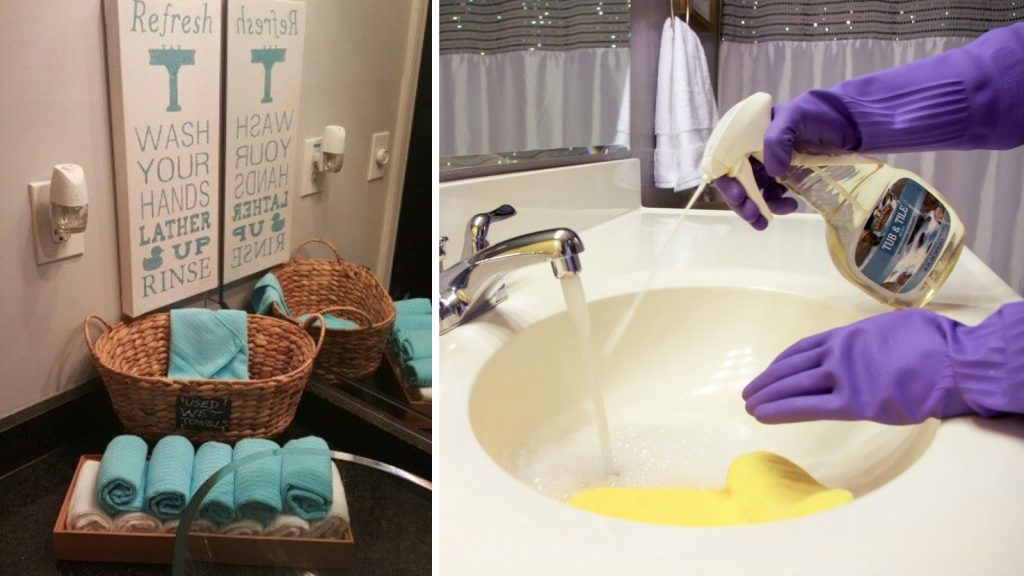
- It is very basic to freshen up the bathroom’s appearance and hygiene, especially if guests will be using it.
- Scrub the sink, commode, and taps using a regular bathroom cleaner, and clean the mirror using a basic glass cleaner.
- Wipe the tiles around the sink and basin to remove splashes or soap residue. And clean the floor and corners thoroughly, paying special attention to areas near the drains.
- Change the towels and restock toiletries if anything is running low.
- Rinse the bucket and mug, and arrange all items neatly.
- Wipe the bathroom door and handle, as these are frequently touched surfaces.
- Avoid bleaching grout lines or tackling hard water stains today, just focus on making the space look and feel clean overall.
10. Outdoor and Entryway Diwali Cleaning
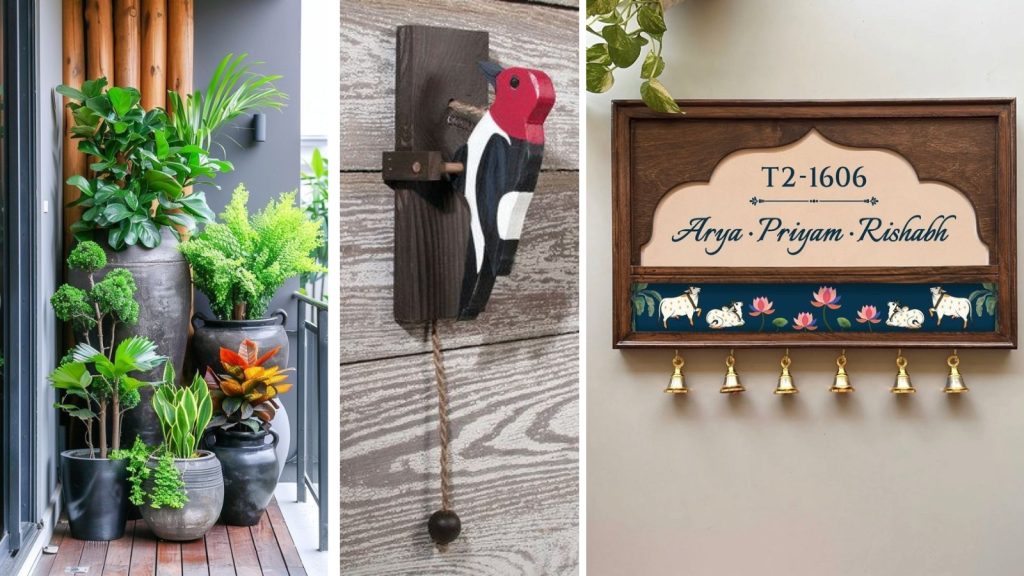
- It is natural to clean floors and remove dust at the front entrance to remove dirt buildup, and do away with any cobwebs from entrance corners, like near ceilings or door frames.
- Dust and neatly arrange any potted plants placed near the entrance or in the balcony.
- If time permits, clean the nameplate and doorbell panel for a fresher look.
- You can also keep torans, diyas, or other decorative items ready to place after cleaning is done.
Know When to Call Professional Cleaners
Some cleaning jobs are best left to professionals. If you’re short on time or not confident handling them yourself, here are a few situations where it’s better to call for help:
1. Deep Cleaning Sofas or Mattresses
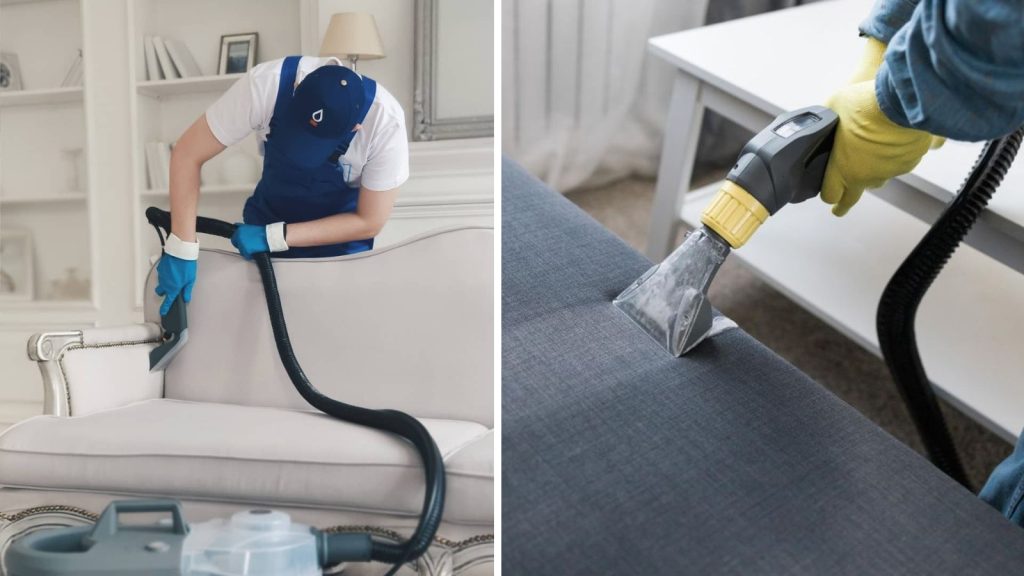
- While surface-level vacuuming and deodorizing can be done at home, deep stains, embedded dust mites, or long-term odours often need specialized equipment and fabric-safe cleaning agents.
- Professional cleaners use steam, suction, or foam techniques that reach deeper layers of upholstery and mattress fabric. This is especially helpful for households with allergies, pets, or long-unused furniture.
2. Kitchen Chimney Servicing

- Chimneys collect a lot of oil, soot, and sticky grime. Home wiping may clean the outer surface, but the filters and internal parts need thorough degreasing, which usually involves dismantling the unit.
- Trying this yourself without the right tools can be messy or even damage the chimney. A trained service professional can clean it inside out, reassemble it safely, and improve both hygiene and suction efficiency.
3. Marble/Granite Floor Polishing
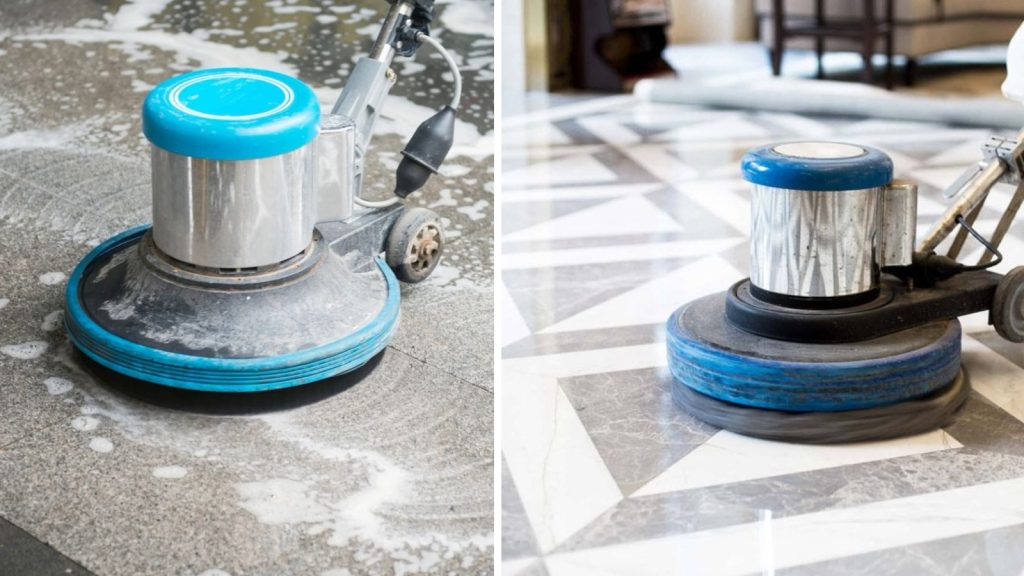
- Mopping marble or granite floors may clean the surface, but it doesn’t restore shine or fix scratches and dullness. Polishing stone flooring is a technical process that involves graded polishing pads, water pressure, and buffing machines.
- Incorrect DIY polishing can leave swirl marks or uneven shine. If your floor looks lifeless or stained, it’s better to have it polished professionally once in a while for long-term maintenance.
4. Multi-Room or Full-House Clean-Up for Diwali
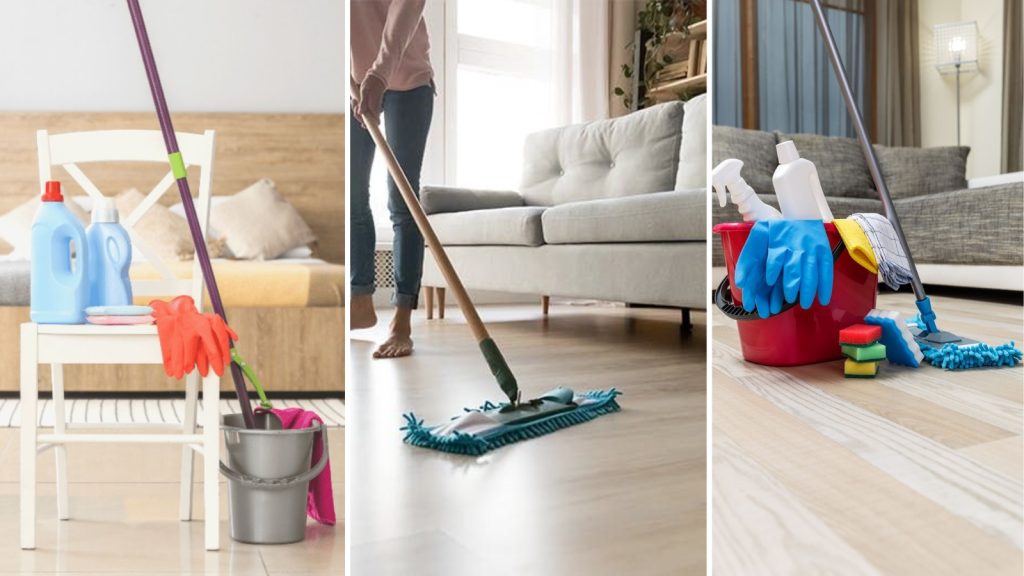
- If your home needs a complete refresh but you’re short on help or energy, trying to deep-clean every room in a single day can lead to exhaustion and half-done work.
- Professional cleaners come with a team, tools, and a plan. They can clean multiple rooms in a few hours.
Instant Decor After Cleaning
- Pick up the pace, go and add festive cushion covers and table runners to your sofas and diwans.
- Light up diyas, candles, or aroma diffusers to come up with a soft and welcoming atmosphere.
- Hang torans or decorative wall lights near doorways or focal points.
- Set up the pooja space with clean cloths and freshly polished metalware.
- Arrange fresh flowers or LED-lit vases to accentuate the festive mood.
- Soften the overall lighting by replacing harsh tube lights with warm lamps or fairy lights.
- Declutter visible surfaces like coffee tables, entry consoles, and countertops for a neater look.
- Take out a new or clean doormat or rug at the entrance. It adds to the first impression.
- And lastly, place a tray with dry fruits, sweets, or water for guests in a visible, easy-to-reach spot. After all, it’s what we all look forward to.
How Can Opalspace Help You?
You’ve scrubbed, cleared, sorted, and swept. Corners have reappeared. Old things have found boxes. The floor feels different underfoot. That’s the thing about festive cleaning.
We know that a home isn’t built all at once. It builds in layers, through care, pauses, habits, and the urge to make things feel just a bit better before the lights go up. If that feeling lingers, of wanting you to grow into itself a little more, we’re around.
We know that a home isn’t built all at once. It builds in layers, through care, pauses, habits, and the urge to make things feel just a bit better before the lights go up. If that feeling lingers, of wanting you to grow into itself a little more, we’re around.

